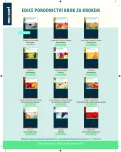Androgen insensitivity syndrome – case report
Authors:
S. Khollová 1; E. Hrdonková 1; R. Pomahačová 2
Authors‘ workplace:
Gynekologicko-porodnická klinika LF UK a FN, Plzeň, přednosta doc. MUDr. Z. Novotný, CSc.
1; Dětská klinika LF UK a FN, Plzeň, přednosta prof. MUDr. J. Kobr, Ph. D.
2
Published in:
Ceska Gynekol 2014; 79(1): 38-42
Overview
Objective:
Presentation of a familiar incidence of complete androgen insensitivity syndrome.
Design:
Case report with literature review.
Setting:
Department of Gynecology and Obstetrics, Department of Pediatrics, Medical Faculty and University Hospital in Pilsen, Charles University in Prague.
Conclusion:
Androgen insensitivity syndrome is the most common male-hermaphroditism. Affected individuals have a male karyotype, but owing to the unresponsiveness of the cells to androgens a disruption in sexual development occurs. Clinical picture of the syndrome is very variable.
Our case-report deals with a familiar incidence of complete androgen insensitivity syndrome, formerly incorrectly called “testicular feminization syndrome“. The karyotype of these individuals is 46, XY. They have female external genitalia, male gonads, the uterus and fallopian tubes are missing and vagina is shorter.
In this case, the complete androgen insensitivity syndrome was diagnosed in two sisters in childhood as a part of reduced growth investigation. The same syndrome was also detected in their mother’s sister. Both girls already underwent laparoscopic gonadectomy. The older one started at the age of 11 with estrogen replacement therapy.
Keywords:
androgen insensitivity syndrome – testicular feminization syndrome – androgen receptors – masculinization – Müllerian inhibiting factor – gonadectomy
Sources
1. Boehmer, AL., Brinkmann, O., Brüggenwirth, H., et al. Genotype versus phenotype in families with androgen insensitivity syndrome. J Clin Endocrinol Metab, 2001, 11, p. 4151–4160.
2. Hořejší, J. Dětská gynekologie. Praha: Avicenum, 1990.
3. Hořejší, J. Vrozené vývojové vady. In Rob, L., Martan, A., Citterbart, K. (ed.) Gynekologie. Praha: Galén, 2008, s. 69–75.
4. Lisá, L., et al. Poruchy sexuální diferenciace. Praha: Maxdorf, 2000.
5. Lubahn, DB., et al. Cloning of human androgen receptor complementary DNA and localization to the X chromosome. Science, 1988, 240(4850), p. 327–330.
6. Lubs, HA. Jr., Vilar, O., Bergenstal, DM. Familiar male pseudohermaphrodism with labial testes and partial feminization: endocrine studies and genetic aspects. J Clin Endocrinol Metab, 1959, 19, p. 1110–1120.
7. Morris, JM. The syndrome of testicular feminization in male pseudohermaphrodites. Am J Obstet Gynecol, 1953, 65, p. 1192–1211.
8. Quigley, CA., et al. Androgen receptor defects: Historical, clinical and molecular perspectives. Endocr Rev, 1995, 16, p. 271–321.
9. Stárka, L. Endokrinologie – lékařské repetitorium. Praha: Triton, 2009.
10. Susman, E. Reifenstein-Klinefelter-Albright syndrome. Med J Aust, 1947, 2(5), S. 155.
11. The Androgen Receptor Gene Mutations Database World Wide Web Server. http://androgendb.mcgill.ca/
Labels
Paediatric gynaecology Gynaecology and obstetrics Reproduction medicineArticle was published in
Czech Gynaecology

2014 Issue 1
Most read in this issue
- Non-neoplastic epithelial disorders of the vulva – lichen sclerosus
- Androgen insensitivity syndrome – case report
- Severe postoperative bleeding after Total Prolift procedure for vaginal vault prolapse – case study
- Comparison of hysterectomy techniques in a group of patient operated for the diagnosis female to male transsexualism
